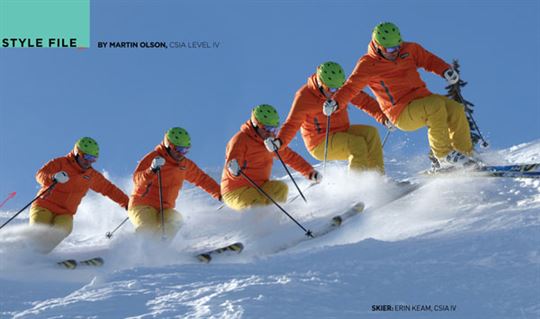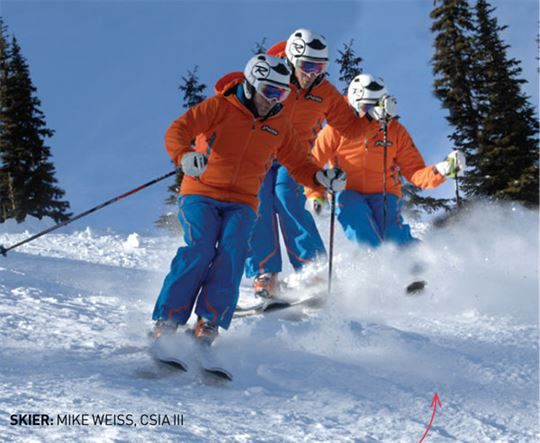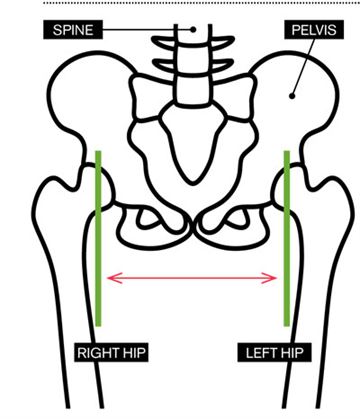
by Martin Olson in December 2014 issue
Moguls have become an endangered species at most resorts, but they can be fun when you find them. One of the shortest roads to a ski instructors’ fistfight is to advocate a particular technique in bumps, so think of this as an option. Events such as the Olympics have created an impression that ultimate bump skiing is a fall-line, pivot-and-slam sprint to the bottom with the occasional backflip thrown in. In the real world, bumps are not machine-made, evenly spaced or symmetrical, and few people have the athleticism to survive an Olympic-style descent. Bumps can be fun for everyone with a few simple tactics:
- you don’t need special short poles;
- you don’t need special skis, what you have will work just fine;
- you don’t have to be an expert skier.
Controlling speed is a key concern, and here Erin shows the useful technique of turning up the hill on the backside of a bump to slow down and make the next turn easy.
Start on small bumps, if possible, and take one at a time at first. Finish each turn by edging aggressively into the backslope of a bump to take you up and over.

PASSIVE POWER
It’s easy to over-think ski technique and try too hard. This sequence demonstrates rebound, a passive source of power that all the best skiers use to exploit energy generated by speed and edge grip. Passive techniques like rebound and muscle-tension release are effective mechanisms that don’t get enough respect. The only tricky part is keeping the feet under the body to maintain balance.
Notice that in all frames the legs are at about the same flex. Resisting with muscle power captures energy from the edge set and launches the skier into a gentle trajectory of several metres. While airborne, the body unwinds from frame 1 to 3 in an effortless repositioning for the next turn.
It’s easy to get the feeling for this by turning into a small bump and using it to lift the mass before turning downhill. Practise at various slow speeds to learn how much to flex and how much to resist for the unweighting you need.
WHAT’S HIP WIDTH?
Skiers are sometimes advised to place skis at “hip width” for a natural stance. From my observations, that usually results in feet too far apart. If you feel as if you’re making an effort to keep your feet apart while skiing, it may be because your stance is too wide. Although hips are fairly wide, the actual bearing points for pressure are slightly inboard. So…real hip width may be a bit narrower than some people think.
